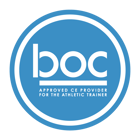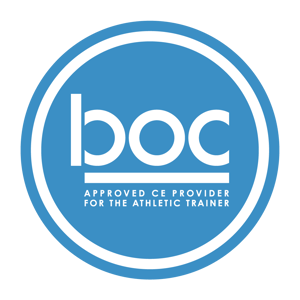Setting the Stage for Success in the Treatment of Children with Autism

Description
This course takes a look at the factors that affect outcomes for infants, toddlers, school-aged children, and young adults with autism spectrum disorder. The course discusses the changing demographics of our society, in which one child in 54 children falls within the spectrum of autism. The principles of treatment of various age groups are discussed, including early intervention for birth to age 3, intermediate unit for ages 3 to 5, and interventions for school-aged children and young adults. The discussion covers sensory, communication, social, and behavioral needs and supports, as well as gross and fine motor evaluations and treatments. The course provides examples of real-life goals tracked from one child from 35 months to 19 years of age. Specific examples are given from a variety of clinical settings. This course will be immediately useful in clinical practice to Rehab professionals who work with children with autism.



Physicourses is an AOTA Approved Provider of professional development. Course approval ID# 6295. This distance learning-independent course is offered at 0.4 CEUs Intermediate Level, OT Service Delivery, Foundational Knowledge. AOTA does not endorse specific course content, products, or clinical procedures.
Available Course Credits
| Alaska State PT & OT Board | 4.00 | ||
 |
AOTA | 4.00 | |
| Arizona State Board of Physical Therapy | 4.00 | ||
| Arkansas State Board of Physcial Thearpy | 4.00 | ||
 |
BOC | 4.00 | |
| California Physical Therapy Board | 4.00 | ||
| Colorado Division of Professions and Occupations | 4.00 | ||
| Connecticut Department of Public Health | 4.00 | ||
| Delaware Examining Board of Physical Therapists and Athletic Trainers | 4.00 | ||
| District Of Columbia Department of Health | 4.00 | ||
| FPTA | 4.00 | ||
| Georgia State Board of Physical Therapy | 4.00 | ||
| Hawaii Board of Physical Therapy | 4.00 | ||
| Idaho Physical Therapy Licensure Board | 4.00 | ||
| Indiana Physical Therapy Board | 4.00 | ||
| Iowa Board of Physical Therapy and Occupational Therapy | 4.00 | ||
| Kansas State Board of Healing Arts | 4.00 | ||
| Kentucky Board of Physical Therapy | 4.00 | ||
| Maine Board of Physical Therapy | 4.00 | ||
| Maryland Board of Physical Therapy Examiners | 0.40 | ||
| Massachusetts Board of Allied Health Professionals | 4.00 | ||
| Michigan Board of Physical Therapy | 4.00 | ||
| Mississippi State Board of Physical Therapy | 4.00 | ||
| Missouri Advisory Commission for Physical Therapists | 4.00 | ||
| Montana Board of Physical Therapy Examiners | 4.00 | ||
| Nebraska Department of Health and Human Services | 4.00 | ||
| New Mexico Physical Therapy Board | 4.00 | ||
| North Carolina Board of Physical Therapy Examiners | 4.00 | ||
| North Dakota Board of Physical Therapy | 4.00 | ||
| Office of Professional Regulation, Vermont Secretary of State | 4.00 | ||
| Oklahoma Board of Medical Licensure and Supervision - Physical Therapy | 4.00 | ||
| Oregon Board of Physical Therapy | 4.00 | ||
| Pennsylvania Bureau of Professional and Occupational Affairs - Physical Therapy | 4.00 | ||
| Physical Therapy Governing Board New Hampshire | 4.00 | ||
| South Carolina Board of Physical Therapy | 4.00 | ||
| South Dakota Physical Therapy License Board | 4.00 | ||
| State of Alabama Board of Physical Therapy | 4.00 | ||
| State of Rhode Island Department of Health | 4.00 | ||
| Tennessee Board of Physical Therapy | 4.00 | ||
| Utah Physical Therapy Licensing Board | 4.00 | ||
| Virginia Board of Physical Therapy | 4.00 | ||
| Washington State Board of Physical Therapy | 4.00 | ||
| Wisconsin Physical Therapy License Board | 4.00 | ||
| Wyoming Board of Physical Therapy | 4.00 |
Course Content
| Setting the Stage for Success in the Treatment of Children with Autism | Module | ||
| Course Evaluation | Module |
Cynthia Slomowitz, PT, DPT, MS, PhD Student
Cynthia has been a physical therapist for over 30 years. She completed her B.S. in Physical Therapy at Northeastern University, M.S. in Physical Therapy at Temple University, and transitional DPT at Temple University. Cynthia is presently enrolled in a PT PhD program at Nova Southeastern University and is interested in performing autism research. Cynthia started treating children after her son was diagnosed with autism spectrum disorder. She has treated preschool-aged and school-aged children, and she currently treats babies in the birth-to-three coaching model, working for over 12 years in the Philadelphia suburbs. She has a wide breadth of experience in treating children with balance, endurance, locomotion, and/or unilateral/bilateral coordination issues, as well as treating children with motor planning, proprioceptive, vestibular, and other sensory issues. Cynthia enjoys pairing songs and rhymes to movement; she had a lot of practice with her 5 children. She is grateful for having inspiring mentors including Dr. Anjana Bhat, Dr. Robert Palisano, and Dr. Briano Di Rezze, collaborating with colleagues, and the ability to help families.
631a Setting the Stage for Success in the Treatment of Children with Autism—Course Objectives
At the completion of this course, the pediatric clinician will be able to:
- Define autism and identify how to recognize the signs of autism.
- Identify appropriate strategies and treatment in one’s discipline and cross discipline.
- Identify ways to encourage self-expression through PECS, AAC, signs, gestures, and/ or utterances while slowly building communication in a meaningful way in order to use these skills in a variety of settings and therapies.
- Recall how to incorporate appropriate behavioral approaches to maximize cooperation, including sensory breaks, the use of “first then next” (non-preferred to preferred), white board (taking turns picking activities), timer, self-stimulation, and other strategies.
- Recall how to encourage family participation in outpatient and wraparound services using Medicaid and encourage families to utilize wraparound services to help reinforce strategies at home and in the community.
- List the Pennsylvania Professional Development Registry 5 R’s, (relationships, responsive interactions, respect, routines, and repetition) and recall how to use them to help improve healthy brain development, using modeling and cueing when needed.
- Identify at least two of the comorbidities of autism, such as PICA, obsessive compulsive disorder, oppositional defiant disorder, and hyperlexia.
- Identify methods to support instruction in the TEACCH method in autistic support classrooms, including physical boundaries, consistent schedule, established expectations, routine, and cues.
- Identify and be able to facilitate Mands and Tacts during play to help generalize skills in different settings.
- Recall how to interact with parents who express anger or ask for inappropriate goals as part of the parental grieving process.
- Identify standardized and non-standardized assessments that are used to evaluate children’s fine and gross motor skills.
- List post-secondary goals, which may include job training and/or college planning.
- Recall how to apply the principles of intervention based on a specific case study.
631a Setting the Stage for Success in the Treatment of Children with Autism—Table of Contents
Page #
Hour 1
Course Instructions 2
Course Description 3
About the Author
Course Objectives 4
Table of Contents 5
Introduction 6
What is Autism? 7
The Diagnosis 8
Intelligence Quotient and Social Intelligence 9
Brain Development and Neuroplasticity 11
Signs of Autism 12
Other Diagnoses 14
Rehab Therapist’s Role with Children with Autism 14
PT and OT Professional’s Focus 15
Strategies with Children with Autism 15
Birth to Age Three Services Early Intervention 19
Hour 2
Age Three to Five Services 24
Best Practices for School-Aged Children 29
Applied Behavior Analysis 37
Assessment of Basic Language and Learning Skills (ABLLS)
and Verbal Behavior Milestones Assessment and
Placement Program (VB MAPP) 39
Hour 3
Pivotal Response Training (PRT) 41
Developmental, Individual Differences, Relationship-Based Model (DIR)
Floortime 41
Other Speech Therapy 43
Occupational Therapy 44
Physical Therapy 48
Case Study 52
Hour 4
Post-Secondary Transition Planning 59
CHAAMP Program 61
Aspire Program 62
Conclusion 64
References 66
Exam 75
Evaluation 78
Customer Cancellation:
Customers may request cancellations of their enrollment or subscription in our digital or live educational services, subject to the terms outlined below. Cancellation requests must be made in writing, either through email or through our designated cancellation process.
Refund Policy:
Refunds will be provided according to the following guidelines: i) For cancellation requests made within 5 days of the initial enrollment or subscription, a full refund will be issued. Refunds will be issued using the same method of payment used for the original transaction, unless otherwise agreed upon in writing.
Provider Cancellation:
In the event Physicourses cancels your course, you will be issued a full refund or transfered to a course of equal or greater value.
Physicourses Conflict of Interest Disclosure Policy for Authors and Staff:
All persons in a position to control the content of any educational activity (authors or staff from Physicourses) are required to disclose to Physicourses any potentially biasing or potential conflict of interests in relationships of a financial, professional, or personal nature.
The intent of this disclosure is not to prevent authors or staff with commercial affiliations from planning an educational activity, or to prevent a Presenter with commercial affiliations from presenting, but rather to inform Physicourses of any potentially biasing relationships so that conflicts are resolved prior to the activity.
It is the policy of Physicourses to ensure balance, independence, objectivity and scientific rigor in all of its continuing education activities. All relevant conflicts of interest identified by the planner, presenter, or as determined by Physicourses will be disclosed to the audience verbally and in writing prior to the start of the presentation.
Definitions for Authors/Staff:
Relevant financial relationships are those relationships in which you benefit by receiving a salary, royalty, intellectual property rights, gift, speaking fee, consulting fee, honoraria, ownership interest (e.g., stocks, stock options, or other ownership interest, excluding diversified mutual funds), or other financial benefit. Financial relationships can also include “contracted research” where the institution gets the grant and manages the funds and you are the principal or named investigator on the grant.
Educational Level: Intermediate
Target Audience: PT, PTA, OT, OTA, ATC
Course Completion Requirements: Passing an online exam with 70% or greater will be required to earn continuing education credit
This course is approved for 0.4 CEUS. 4 contact hours
Physicourses is committed to ensuring accessibility to the most extensive audience possible. If you have any questions or special needs requests, please contact us at info@physicourses.com.